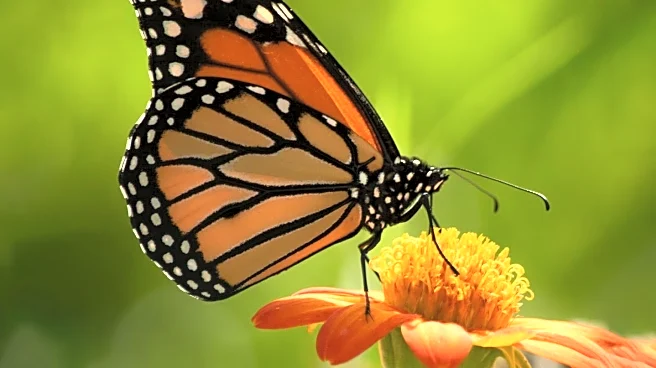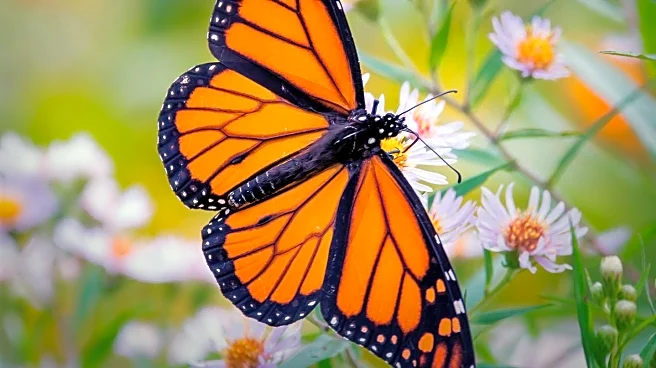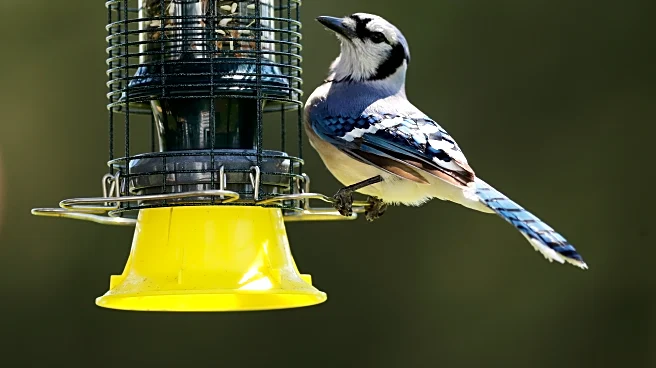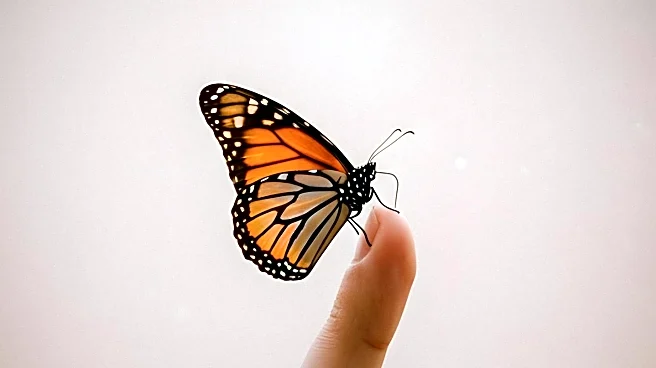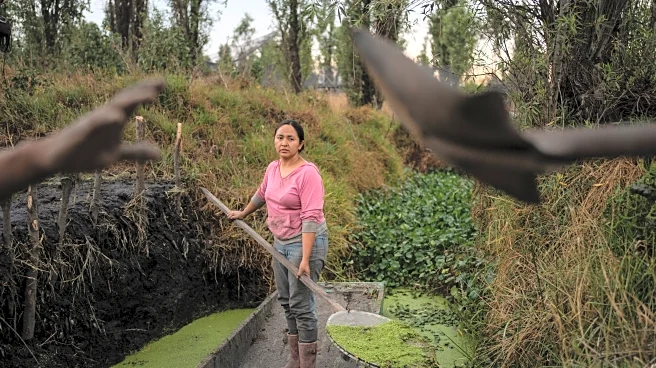What is the story about?
What's Happening?
An injured monarch butterfly received a wing transplant at a nature preserve in New York, allowing it to continue its migration journey. The procedure involved carefully attaching a new wing to the butterfly, which had been unable to fly due to its injury. Monarch butterflies are known for their long migratory paths, traveling thousands of miles from North America to central Mexico. This intervention highlights the efforts of conservationists to assist individual animals in their natural processes, ensuring the survival of species that face numerous environmental challenges.
Why It's Important?
The successful wing transplant underscores the importance of conservation efforts in preserving biodiversity. Monarch butterflies play a crucial role in ecosystems as pollinators, and their migration is a significant natural phenomenon. However, their populations have been declining due to habitat loss, climate change, and other environmental pressures. By aiding individual butterflies, conservationists can help maintain the population and support ecological balance. This event also raises awareness about the innovative methods being employed to protect wildlife and the need for continued support for conservation initiatives.
What's Next?
The nature preserve may continue to monitor the butterfly's progress as it resumes its migration. This case could inspire similar interventions for other injured wildlife, promoting the use of innovative techniques in conservation. Additionally, it may lead to increased public interest and support for conservation programs aimed at protecting monarch butterflies and other endangered species. Stakeholders, including environmental organizations and government agencies, might consider expanding resources and funding for such initiatives.
Beyond the Headlines
This event highlights the ethical considerations in wildlife conservation, balancing human intervention with natural processes. It raises questions about the extent to which humans should interfere in nature to aid individual animals versus focusing on broader habitat preservation. The success of the wing transplant could encourage further research into non-invasive methods of assisting wildlife, potentially leading to new conservation strategies.
AI Generated Content
Do you find this article useful?
